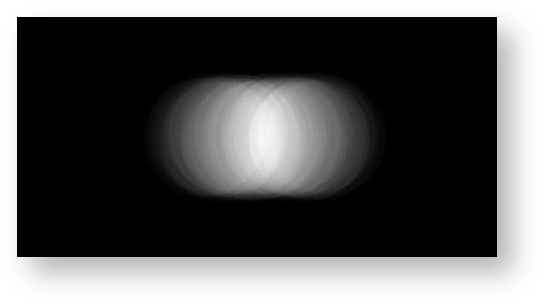Overview
The Motion Blur group of attributes affects how motion blur is rendered for various scene components. Note that motion blur can also be controlled per object in the Motion Blur group of a Geometry Attributes Node, as described in Motion Blur.
The frame exposure time is defined by the render camera's Shutter Angle attribute, which is inside the Special Effects group of a standard Maya Camera. See Scene Elements for how to select a render camera.
The various "Samples" attributes have a default value of 2, meaning that the movement is sampled at the beginning and at the end of the frame exposure. This is fine for linear movements. Increase the relevant "Samples" attribute if the motion path of the camera or objects is far from linear (like a turning propeller for example). Higher sample values imply longer motion blur computation.
In order to be correctly motion blurred, the objects must have a properly defined position or deformation in between frames. Furthermore, the scene must be set up to allow arbitrary changes of the current time. Generally this means that all dynamics, nDynamics and fluid simulation must have a disk cache, because the scene will not necessarily be played back in the order required for the simulation to operate correctly in an incremental manner.
Note that due to the way they are exported, anything involving particle systems, nParticle systems and particle instancers will require Enable Deformation Blur to be turned on to render with proper motion blur.
The Motion Blur group
Enable Camera Blur
When this toggle is on, the movement of the camera is taken into account when computing the motion blur. By default this toggle is off.
Enable Transformation Motion Blur
When this toggle is on, objects that have animated geometric transformation (translation, rotation or scale) will be blurred. By default, this toggle is off.
Enable Deformation Motion Blur
When this toggle is on, objects whose geometry is deforming (such as cloth simulation geometry or animated fur) will be blurred. By default, this toggle is off. Deformation motion blur should be enabled only when necessary since it has a higher memory footprint.
Camera Blur Samples
This attribute specifies the number of times the position and orientation of the camera is sampled during the time interval that the shutter is opened. The default number of camera samples is 2.
Transformation Samples
This attribute specifies the number of times the transformation of the object is sampled during the time interval that the shutter is opened. The default number of transformation samples is 2.
Deformation Samples
Specifies the number of times the geometry of the object is sampled for motion blur during the time interval that the shutter is opened. The default number of deformation samples is 2.
Motion Blur Position
This controls the time at which camera’s shutter opens and closes relative to a frame of animation. The interval is the time during which the shutter remains open, and is defined by the camera's Shutter Angle attribute. The following values are available:
| Option | Description |
|---|---|
| end on frame | The shutter closes at frame start; it opens an interval before. |
| centred on frame | The shutter opens half an interval before frame start, and closes half an interval afterward. This is the default. |
| start on frame | The shutter opens at frame start, and closes an interval afterward. |
Sample Motion Blur On Integer Frames
Normally, the scene is sampled for motion between frames, requiring objects to be properly animated between frames. Turn this attribute on when the animation is only defined on frames (such as some nDynamics simulations). This attribute is only available when setting Motion Blur Position to either ‘start on frame’ or ‘end on frame’. It will force the number of samples for "Camera Blur Samples", "Transformation Samples" and "Deformation Samples" to ‘2’. The scene will be sampled at (t-1, t) or at (t, t+1), if "motion blur position" is set to ‘end on frame’ or ‘start on frame’, respectively. This attribute is off by default.
Shutter Efficiency
Sets how “efficient” the shutter of the camera is, at opening and closing times. ‘1.0’ (the default) is maximum efficiency, meaning that the shutter of the camera opens and closes faster than speed of light, which is a non-natural shutter. Decreasing those values, to ‘0.75’ for instance, will simulate slower opening camera shutter and produces softer motion blurs, closer to what is expected in real life cameras.
Shutter Angle Scale
A multiplier applied on the render camera’s shutter angle. It can be used to increase or decrease the motion blur effect without changing the camera’s attributes. This attribute is set to ‘1.0’ by default.
Sample Motion
Turning off this toggle will disable motion blur sampling while preserving dPdtime vectors. This attribute is enabled by default.
Extreme Motion And Depth Of Field
Turning on this attribute avoids artefacts caused by simultaneous use of depth of field, motion blur and REYES. This will also render much slower, so it is recommended to leave this attribute off unless it is absolutely required. The left image below shows the artefacts while the right image shows the same scene with this attribute turned on. This attribute is off by default.


